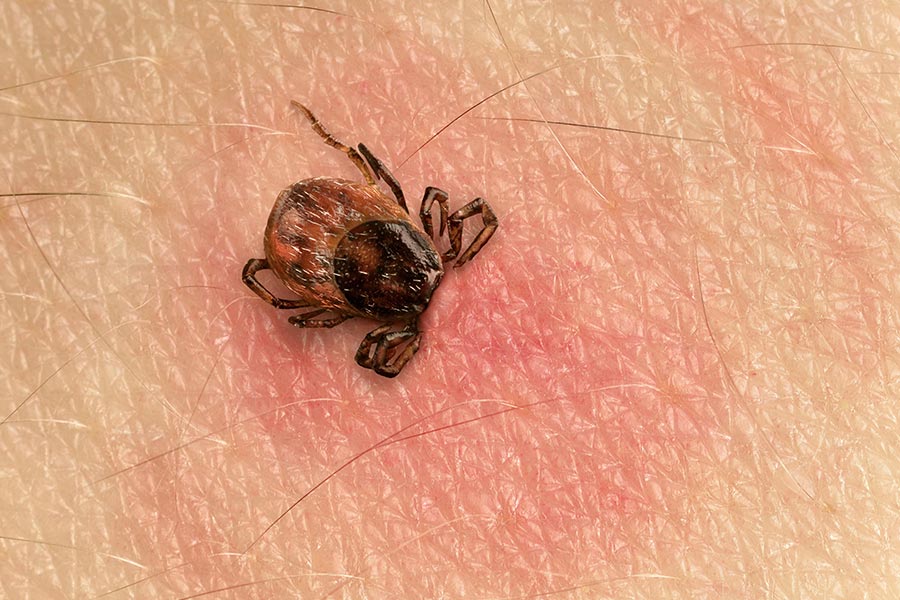Lymecare Alliance: A Comprehensive Guide to Resources and Support
Lymecare Alliance: A Comprehensive Guide to Resources and Support
Blog Article
Comprehending Lyme Disease-- Important Recognition for Avoidance
Lyme condition stays a substantial public health concern, mostly transmitted via the attacks of contaminated ticks, especially in areas with thick plants. Comprehending its transmission, signs and symptoms, and safety nets is vital for mitigating risks associated with this possibly devastating health problem. The very early recognition of Lyme illness is vital, yet lots of individuals remain not aware of its indications or the environments that posture the highest threat. As we discover the complexities of this illness, one have to take into consideration not only the medical ramifications however likewise the useful actions for reliable prevention. What methods can absolutely safeguard against this hidden risk?
What Is Lyme Disease?
If left unattended, Lyme illness can advance to more serious phases, possibly affecting the joints, heart, and anxious system. The disease can be testing to identify, as its symptoms can mimic those of other health problems.
Prompt recognition and therapy are vital in managing Lyme illness and preventing issues, with very early antibiotic treatment generally leading to positive outcomes.
How Lyme Condition Spreads
Lyme illness largely spreads with the bite of contaminated black-legged ticks, additionally understood as deer ticks, which lug the microorganism Borrelia burgdorferi. These ticks are commonly discovered in grassy or wooded locations, typically residing on bushes or low plant life. They need a blood dish from a host, such as pets or humans, to grow and duplicate.
Transmission generally happens when ticks connect to the skin and stay for an extended duration, usually 24 to 2 days. The danger of infection increases with the period of attachment, as the germs is transferred from the tick's saliva right into the host's bloodstream. Ticks can be active throughout warmer months, especially in springtime and summer season, making outdoor activities a prospective threat for direct exposure.
While black-legged ticks are the primary vectors, other types, such as the Western black-legged tick, can additionally send Lyme disease. It is important to be alert in areas where ticks prevail. Preventative measures consist of wearing protective clothing, using tick repellents, and performing complete tick checks after exterior tasks to reduce the likelihood of attacks and succeeding transmission of Lyme disease.
Signs and Diagnosis
Recognizing the symptoms of Lyme condition is crucial for timely medical diagnosis and therapy, as early intervention can considerably affect healing. One of the most identifiable early symptom is the erythema migrans rash, which shows up as a round, red lesion with a main cleaning, frequently appearing like a "bull's- eye." This breakout usually creates within 3 to 30 days after a tick bite and might be accompanied by flu-like signs and symptoms such as fever, chills, fatigue, muscle mass pains, and headaches.

Medical diagnosis of Lyme condition mostly relies upon professional analysis, taking into consideration the person's signs and symptoms and possible exposure to ticks in native to the island areas. Research laboratory examinations, including enzyme-linked immunosorbent assays (ELISA) adhered to by Western blot tests, can sustain the diagnosis yet are not definitive in early-stage Lyme condition. Prompt acknowledgment and diagnosis are vital for initiating proper antibiotic therapy, which is most reliable when administered early in the illness training course.
Prevention Strategies
Protecting against Lyme condition needs a positive method, particularly for people that spend time in locations where ticks are widespread. article source In enhancement, tucking pants right into socks and using tick-repellent items containing DEET or permethrin can dramatically decrease the threat of tick accessory.
Regularly examining oneself, kids, and family pets for ticks after outdoor activities is crucial. Ticks needs to be immediately removed making use of fine-tipped tweezers, understanding them as near the skin's surface as possible. It is suggested to shower within two hours of returning inside your home, as this can help remove ticks prior to they affix.

Therapy Options
Reliable monitoring of Lyme illness hinges on timely and ideal therapy alternatives, which primarily include antibiotic therapy. Early local Lyme disease is frequently treated with oral antibiotics such as doxycycline, amoxicillin, or cefuroxime axetil for a period of 10 to 21 days.
In cases of very early distributed Lyme illness, where site link neurological or cardiac signs might arise, a much longer program of dental anti-biotics or intravenous prescription antibiotics may be necessitated. For people experiencing consistent symptoms after preliminary therapy, called Post-Treatment Lyme Disease Disorder (PTLDS), a much more complicated monitoring strategy may be required. This can entail a multidisciplinary technique, resolving not just the physical signs and symptoms yet also mental facets, as fatigue and cognitive problems prevail.
It is necessary for people to involve in open interaction with their doctor to customize treatment strategies to their specific requirements, making sure the most effective possible outcomes in the management of Lyme disease.
Final Thought
Lyme illness postures significant health risks largely due to its click to read more transmission using contaminated black-legged ticks. Continued awareness and education and learning regarding Lyme disease are essential in minimizing its influence, consequently promoting healthier communities and guarding public health and wellness against this prevalent tick-borne ailment.
Lyme condition primarily spreads out through the bite of contaminated black-legged ticks, additionally known as deer ticks, which bring the microorganism Borrelia burgdorferi. Lymecare Alliance.While black-legged ticks are the key vectors, various other types, such as the Western black-legged tick, can also transfer Lyme illness. Preventative actions consist of putting on safety garments, using tick repellents, and carrying out detailed tick checks after outdoor tasks to decrease the probability of bites and subsequent transmission of Lyme illness
Diagnosis of Lyme illness mainly depends on professional examination, taking right into account the individual's signs and symptoms and potential exposure to ticks in native to the island areas.Lyme condition presents considerable health and wellness dangers mainly due to its transmission using contaminated black-legged ticks.
Report this page